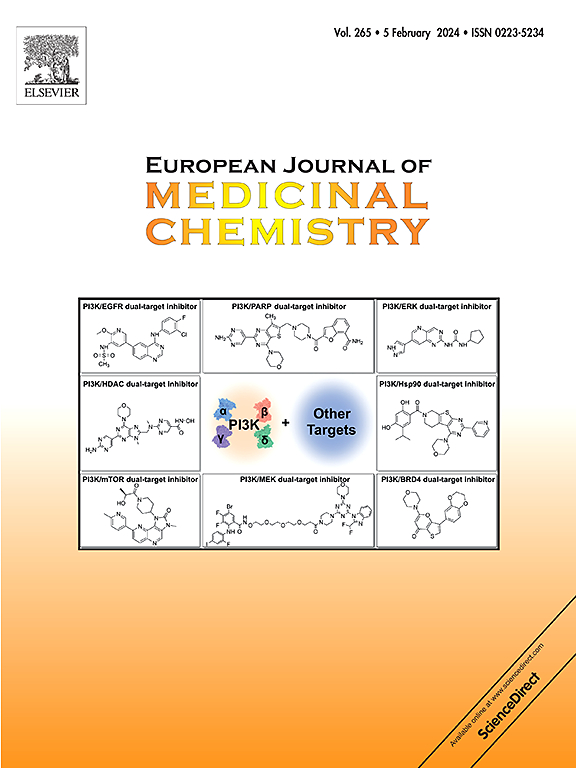A deep learning model for structure-based bioactivity optimization and its application in the bioactivity optimization of a SARS-CoV-2 main protease inhibitor
IF 6
2区 医学
Q1 CHEMISTRY, MEDICINAL
引用次数: 0
Abstract
Bioactivity optimization is a crucial and technical task in the early stages of drug discovery, traditionally carried out through iterative substituent optimization, a process that is often both time-consuming and expensive. To address this challenge, we present Pocket-StrMod, a deep-learning model tailored for structure-based bioactivity optimization. Pocket-StrMod employs an autoregressive flow-based architecture, optimizing molecules within a specific protein binding pocket while explicitly incorporating chemical expertise. It synchronously optimizes all substituents by generating atoms and covalent bonds at designated sites within a molecular scaffold nestled inside a protein pocket. We applied this model to optimize the bioactivity of Hit1, an inhibitor of the SARS-CoV-2 main protease (Mpro) with initially poor bioactivity (IC50 : 34.56 μM). Following two rounds of optimization, six compounds were selected for synthesis and bioactivity testing. This led to the discovery of C5, a potent compound with an IC50 value of 33.6 nM, marking a remarkable 1028-fold improvement over Hit1. Furthermore, C5 demonstrated promising in vitro antiviral activity against SARS-CoV-2. Collectively, these findings underscore the great potential of deep learning in facilitating rapid and cost-effective bioactivity optimization in the early phases of drug development.


求助全文
约1分钟内获得全文
求助全文
来源期刊
CiteScore
11.70
自引率
9.00%
发文量
863
审稿时长
29 days
期刊介绍:
The European Journal of Medicinal Chemistry is a global journal that publishes studies on all aspects of medicinal chemistry. It provides a medium for publication of original papers and also welcomes critical review papers.
A typical paper would report on the organic synthesis, characterization and pharmacological evaluation of compounds. Other topics of interest are drug design, QSAR, molecular modeling, drug-receptor interactions, molecular aspects of drug metabolism, prodrug synthesis and drug targeting. The journal expects manuscripts to present the rational for a study, provide insight into the design of compounds or understanding of mechanism, or clarify the targets.

 求助内容:
求助内容: 应助结果提醒方式:
应助结果提醒方式:


